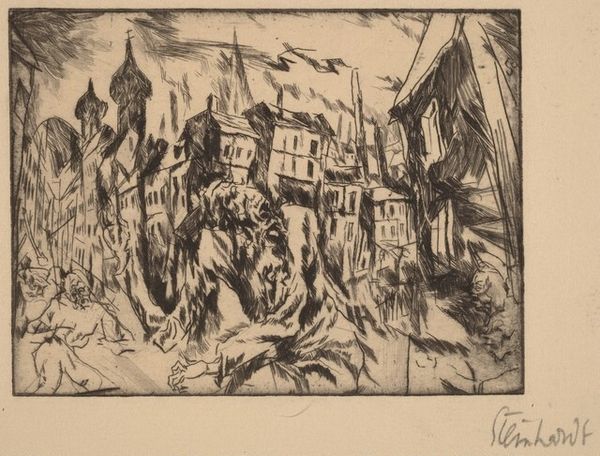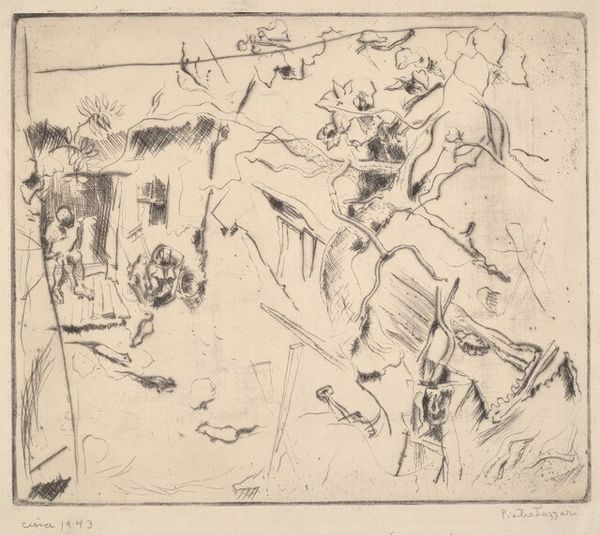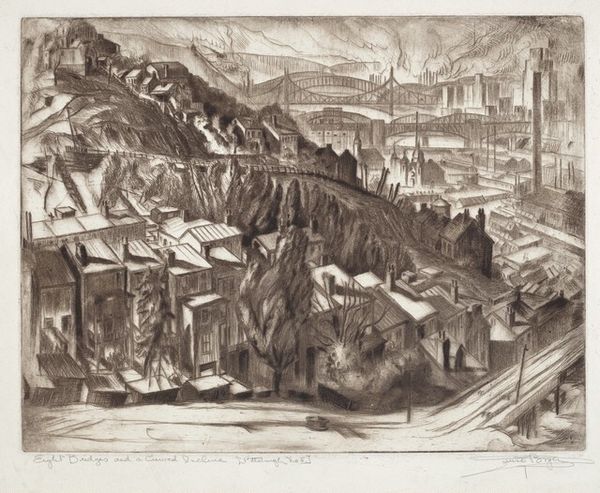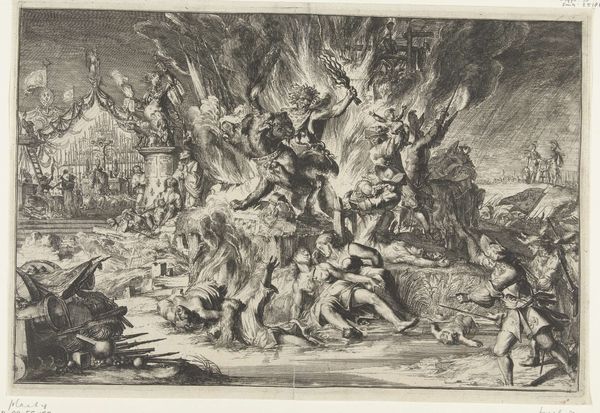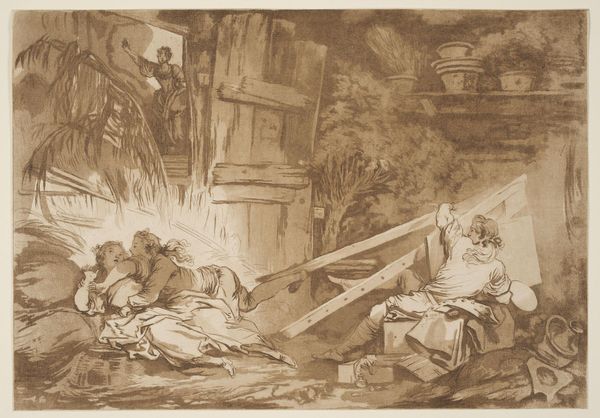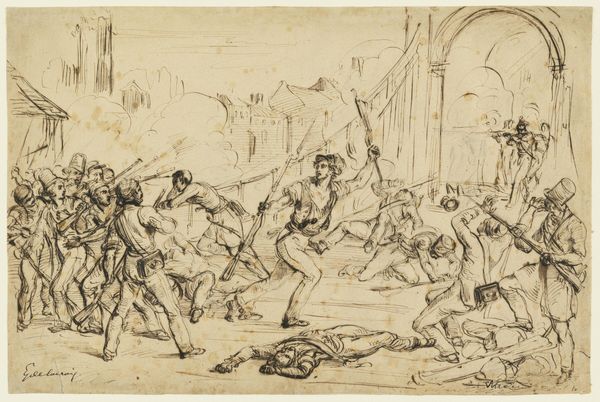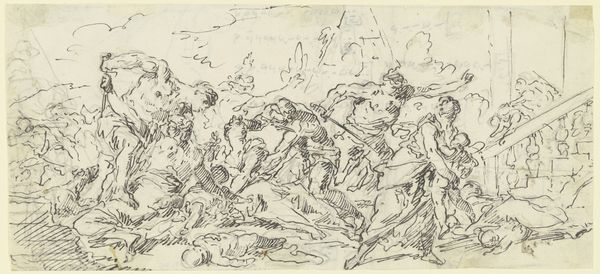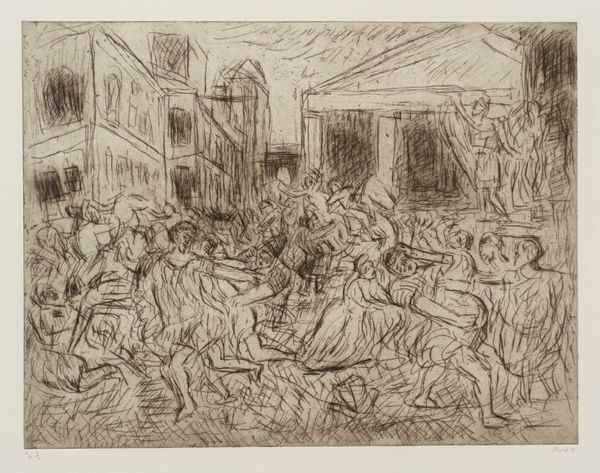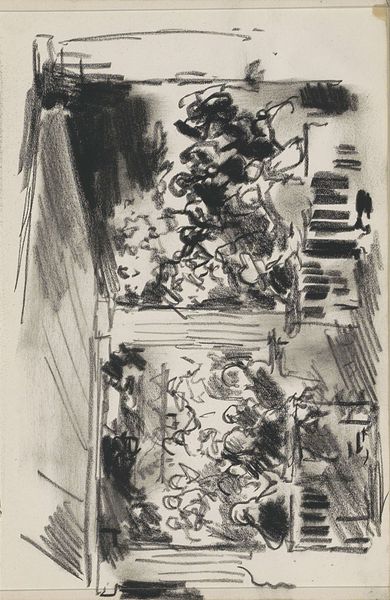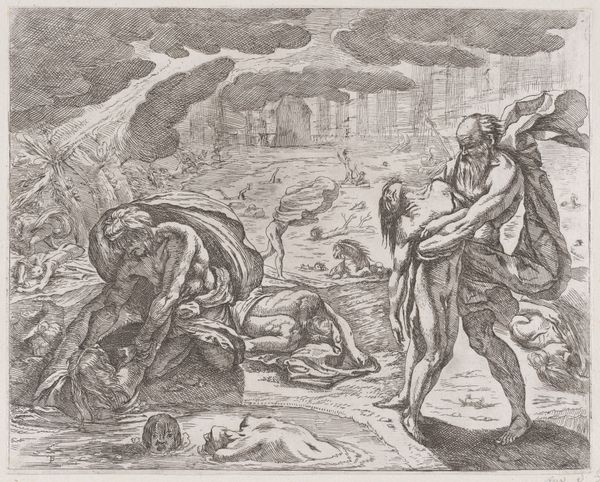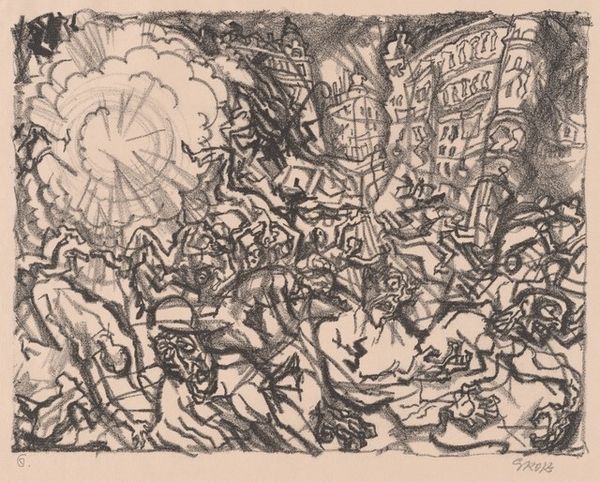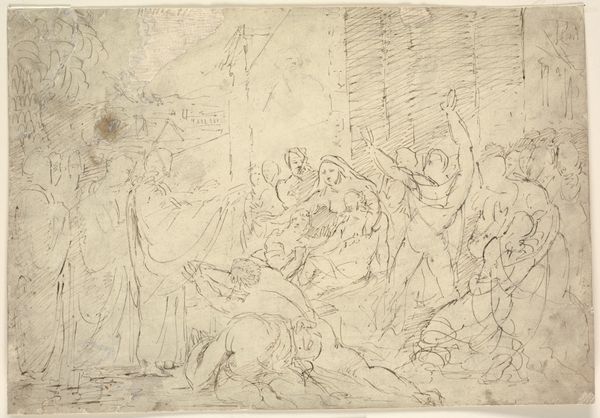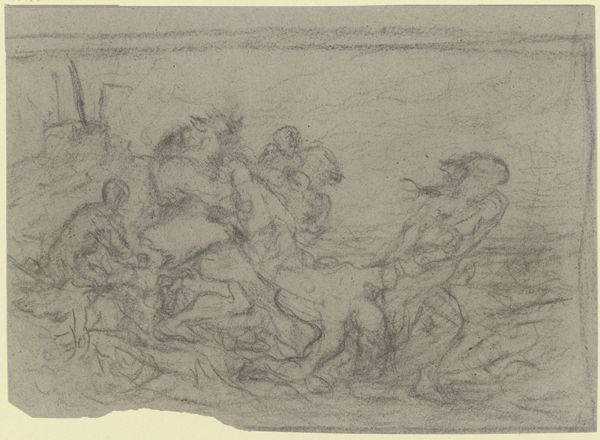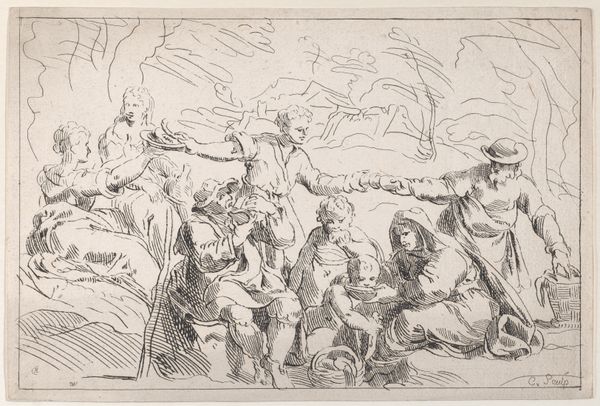
drawing, print, etching, ink
#
drawing
#
narrative-art
# print
#
etching
#
german-expressionism
#
ink
#
expressionism
#
cityscape
#
history-painting
Dimensions: plate: 13.6 × 19.5 cm (5 3/8 × 7 11/16 in.) plate: 19.9 × 28 cm (7 13/16 × 11 in.)
Copyright: National Gallery of Art: CC0 1.0
Curator: Welcome. Here we have Jakob Steinhardt's stark etching and ink drawing from 1913, titled "Pogrom." Editor: The scene is immediately unsettling. The chaotic jumble of lines creates an atmosphere of panic and violence. What strikes me is the density of the crowd rendered against what appears to be a cityscape in turmoil. Curator: Indeed. Steinhardt masterfully uses the stark contrast of light and shadow to create a sense of unease. Observe how the architecture in the background appears almost as tormented as the figures in the foreground. Notice the anguished gestures and distorted features; all contributing to an undeniable expressionist aesthetic. Editor: But it's crucial to unpack what “pogrom” signifies historically. These were violent riots aimed at the persecution and massacre of Jewish people, particularly in Eastern Europe. This work isn't just about formal composition, it's about bearing witness to the horrors of antisemitism and ethnic violence. The etching’s very lines seem to claw at the surface, echoing the lived experiences of terror. Curator: Of course. The emotional weight is undeniable. We can appreciate how the artist uses the city, its buildings, and by extension, its structures, as both stage and silent witness. Note the almost brutal application of the ink in some areas, offset by the more delicate lines creating a spatial tension. Editor: And think about the impact of showing the "everyday" buildings as complicit, almost collapsing, which might reflect a society crumbling under the weight of its own prejudice. That kind of perspective, placing historical violence within familiar urban environments, serves as an indictment of institutional apathy. Curator: The effectiveness resides within Steinhardt's strategic distribution of tonal weight, activating particular formal elements within the total composition. But also this technique effectively heightens the image's overall emotional impact. Editor: I’m most struck by the understanding that each of those etched lines represents a displaced body, a stolen future. I can not unsee the very real human suffering embedded in this piece. It forces a confrontation with history and its continuous reverberations today. Curator: It’s a compelling synthesis of form and content that resonates to this day. Editor: Yes, a difficult but deeply important work to reflect on.
Comments
No comments
Be the first to comment and join the conversation on the ultimate creative platform.
